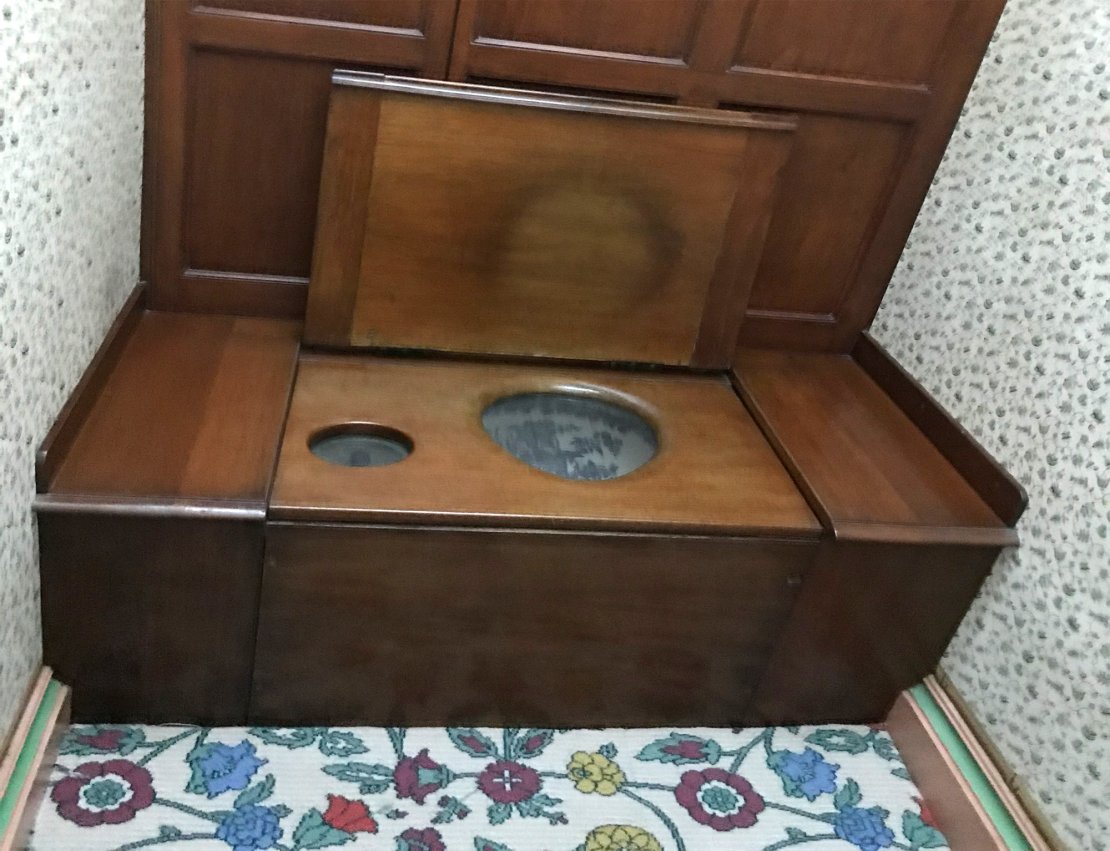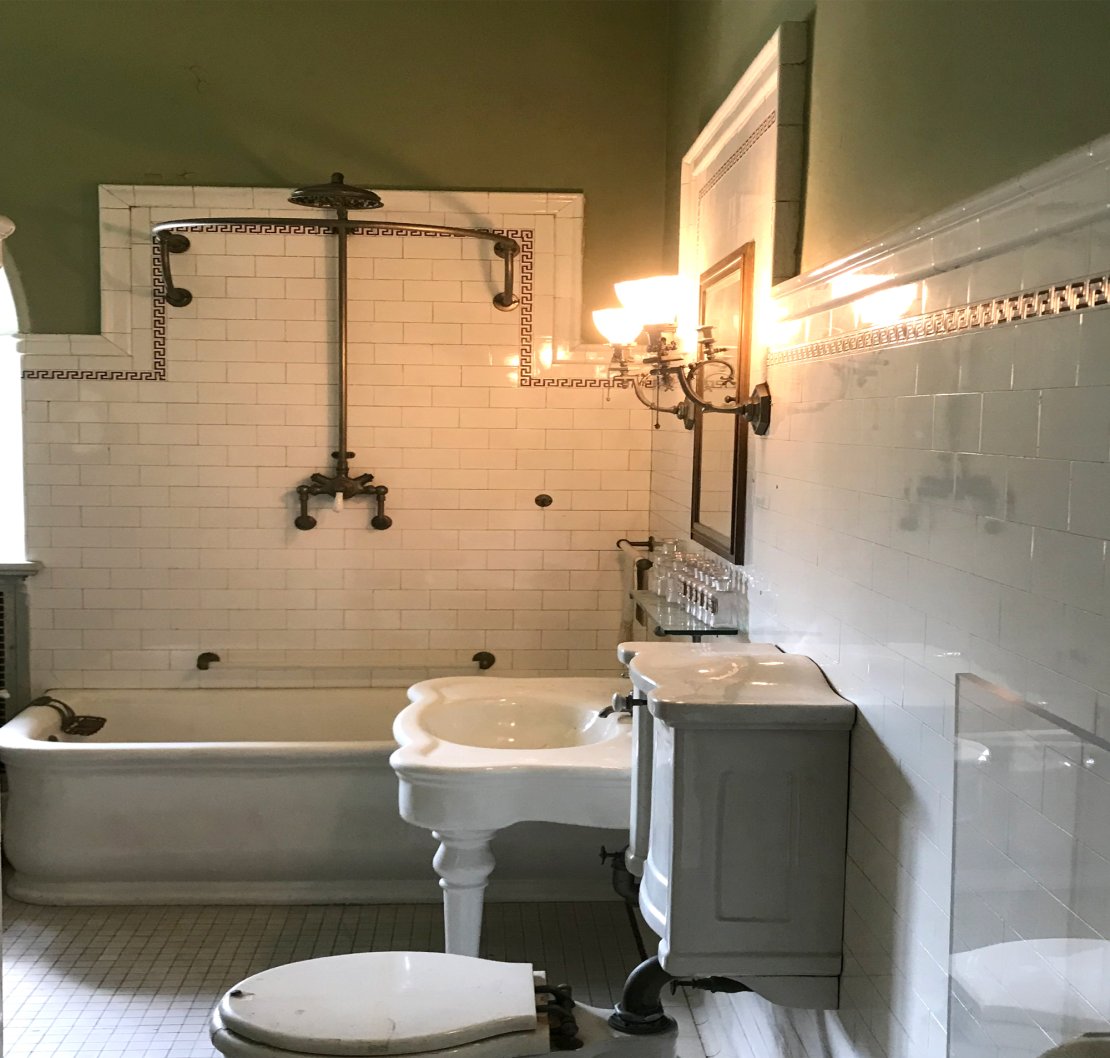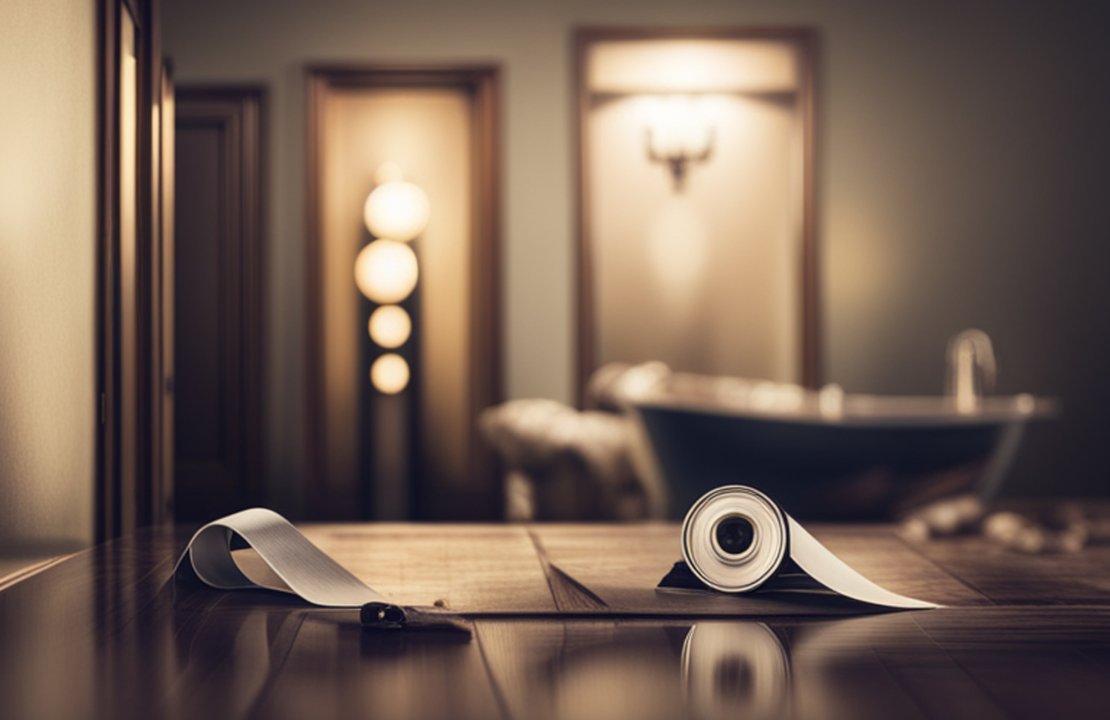To truly appreciate the role of wallpaper in the Victorian house, one must first understand the prevailing mindset of the era. Victorian society revelled in ostentation, its inhabitants unabashedly flaunting their wealth and status through lavish interiors. Nothing was deemed too grand, too intricate, or too ornamental. In this context, wallpaper became a powerful tool, transforming dull walls into portals to fantasy and escapism.
In appreciation of early Victorian bathrooms
Stepping into a Victorian bathroom was akin to entering a whimsical dreamscape, a fantastical realm where reality melted away, and one could lose oneself amidst a riot of colours, patterns, and motifs. Picture, if you will, walls dressed in elaborate floral designs, resplendent arabesques, and scenes reminiscent of faraway lands. No inch was left untouched, no surface left unadorned. Every square inch of the bathroom was a canvas begging for artistic indulgence.

The designs themselves were a testament to the Victorian obsession with nature, encapsulating the era's infatuation with botanical studies and the exploration of far-flung lands. Palm fronds, exotic birds, and delicate blooms danced across the walls, their vibrant hues and intricate detailing transforming the bathroom into a veritable horticultural haven. It was as if the Victorian homeowner sought to recreate an Edenic paradise, complete with flora and fauna, within the confines of their very own bathroom.
But wallpaper in Victorian bathrooms was not merely an exercise in visual extravagance. It served a practical purpose too. In an age when hygiene was becoming an increasingly important aspect of daily life, wallpaper played a vital role in concealing the unsightly dampness and imperfections that afflicted many bathrooms. Thick, textured papers were employed to withstand the rigours of moisture and steam, simultaneously offering a protective layer and enhancing the aesthetic appeal of the space.
Furthermore, wallpaper was not confined to the walls alone. Ceilings and even bath panels were frequently adorned with matching or complementary designs, creating a harmonious visual symphony that enveloped the bather in an immersive experience. One can only imagine the delight of soaking in a claw-footed tub, surrounded by a pantheon of celestial motifs or a tapestry of woodland creatures, as the eye roamed from wall to ceiling to bath panel, all united in a grand design in the traditional bathroom.
Bathrooms later in the Victorian era
However, as with all things Victorian, the excesses eventually gave way to a shift in taste. The dawn of the 20th century saw a burgeoning interest in simplicity and minimalism, a reaction against the over-the-top aesthetic of the Victorian era. Wallpaper, once revered for its ability to transport the mind to otherworldly realms, fell out of favour and gave way to more restrained finishes. The extravagant bathrooms of yore were slowly replaced by utilitarian spaces, stripped of their decorative fervour.

The late 1800s saw the beginning of the phenomena that would eventually become known as the contemporary bathroom. Sewer systems, hot and cold running water, indoor plumbing, and flush toilet were all examples of innovations that occurred during this period. The period beginning around 1860 and continuing into the early 1900s is referred to as the Victorian era, named after Queen Victoria.
During this period, plain white tiles became the preferred choice for wall covering. These tiles were frequently coupled with marble sinks and even marble flooring in homes that belonged to affluent families. Copper, zinc, or tin were the materials of choice for the early forms of oval Victorian baths. That is until the enamelled cast-iron tub was invented in the year 1883. By the year 1885, a cast-iron claw foot version of the tub became the standard fixture in Victorian bathrooms. The days of putting off taking a shower were finally over!
The essence of bathrooms designed in the Victorian style may be encapsulated in three simple descriptors: luxurious, celebratory, and decorative. After all, life in the upper crust back then was pretty much perfect in every way with detailed Victorian wallpapers.
The more well-to-do sorts had a plethora of riches, power, and free time to mess around with, in contrast to the lower classes, who did not really have the time or resources to worry themselves with anything other than simply avoiding dying. This, in conjunction with the chaotic mix of inspirations from all over the world, led to the creation of complicated patterns, vibrant colours, and an eclectic hodgepodge of styles.
The term "bathroom" was coined because most Victorian homes had their bathtub and basin located in the same room. The toilet, however, was located in a separate room that was either called the lavatory or the water closet. Although these ultimately evolved into the common multi-purpose bathrooms in modern homes, many modern houses still include a separate WC in addition to their primary bathroom.
The legacy of Victorian wallpaper in bathrooms endures. The surviving examples stand as poignant reminders of an era that dared to push the boundaries of design and aesthetics. They serve as a testament to the creative spirit of the Victorians, who found solace and delight in transforming the most mundane of spaces into captivating showcases of their ingenuity.
Period bathroom style in the 21st Century
It should not come as any surprise that the patterns and colours linked with this era continue to be a popular choice for modern homeowners, given the reputation that the Victorians have earned for their elegance and refinement.
You could have settled on the idea of incorporating Victorian details into the design of your brand-new period bathroom, but you might not have made up your mind about the design as a whole. If this is the case, we have a wide variety of images of floral wallpapers, botanical wallpapers and other period wallpapers that can assist you in narrowing down the look that you would like to create, or you can simply add the products you like to your wish list.
There are a lot of different ways that the Victorian style can be recreated, or elements of it can be incorporated into any bathroom, whether it be a small cloakroom, a large family bathroom, or an opulent main bathroom with luxurious features and deluxe products as the interior design focal points. One such way is incorporating period style wall decorations just like the Victorians did.
The next time you find yourself in a Victorian bathroom, take a moment to appreciate the walls



Be the first to add a comment...